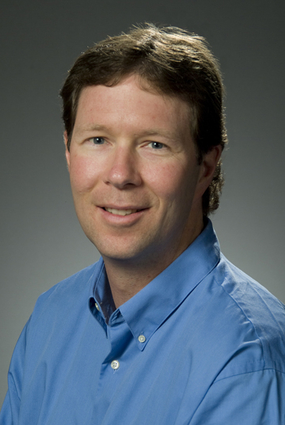Qualities of LIFE fulfill energy, security goals
(Editor’s note: This is another in a series of interviews with key leaders of the 100-day science and technology road mapping project. The project centers on seven focus areas: stockpile stewardship science; nuclear counterterrorism and forensics; cyber and space security and intelligence; biosecurity; regional climate modeling and impacts; LIFE — Laser Inertial Fusion-Fission Energy (LIFE); and advanced laser optical systems and applications. Today, hear from Jeff Latkowski who is spearheading the LIFE area of the plan.)
Since his arrival at the Laboratory in April 1991, Jeff Latkowski’s career has been inextricably linked to laser research and he wouldn’t have it any other way. Hired as a nuclear engineer into the Applied Research Engineering Division, Latkowski was matrixed to the National Ignition Facility (NIF) to work on radiological safety and waste management issues. He moved to the New Technologies Engineering Division in 2001, serving first as group leader for NIF neutronics and later as deputy associate program leader for fusion technology in the Physics and Advanced Technologies Directorate.
Latkowski’s next assignment was in the National Security Engineering Division developing the Laser Inertial Fusion-Fission Energy (LIFE) program. Since August 2008, he has been the acting chief engineer of the LIFE project.
Latkowski received his Ph.D. in nuclear engineering from UC Berkeley in 1996.
Why did you want to be a part of this roadmap plan?
Personally, I was drawn to this roadmap effort because of the mission. Let’s face it, this is save-the-world kind of stuff. What we’ve got is a phenomenal idea and the timing is just about perfect. What we want to provide is a once-through, closed nuclear fuel cycle, something the world has never seen. With that you can realize some significant proliferation advantages in that you don’t need isotopic enrichment at the front end of the fuel cycle and you have very little plutonium sitting around at the back end. With NIF ignition on the horizon we could soon be in a position to demonstrate all the physics needed for a LIFE engine in just a few years. In light of that, it’s reasonable to talk about having a prototype plant operating just 10 years after NIF ignition. The multi-disciplinary nature of the problems and challenges that LIFE faces will, at times, be daunting. We will need expertise from all the areas of the Laboratory in order for this to succeed, plus we’ll need to engage others outside the fence. It’s really exciting and a lot of fun. Personally I just couldn’t pass up the opportunity to have an impact on the path forward for LIFE and the success of this mission.
What are your areas of interest?
The majority of my technical experience is in the area of (target) chamber environment. So many things have to happen in that physical space in a short period of time; you have to inject and engage the targets; you have to transport and focus the laser beams; protect the first wall and final optics from the X-ray and debris threats; convince the neutrons to do our bidding; remove the heat; and then reset the chamber environment for another shot just 75 milliseconds later. Each of these, as you can imagine, is a very challenging task. Addressing how all the interfaces work and making sure all systems work together is something I enjoy.
What is your team working on now?
Currently, within the 100-day effort, we’re working on three main things: first of all, we’re trying to understand the nuances of the different missions. LIFE engines that are used to burn spent nuclear fuel would look different from ones that burn excess weapons material or other ones used to burn depleted or natural uranium for the ultimate energy solution. Trying to understand the subtle differences in the design for each of these is definitely something we want and need to do. Second, we’re trying to understand the development pathway for all of these LIFE systems. We want to be in the position to go as fast as possible should we be given the go-ahead. We really think that in order to have a sizeable impact on energy security and climate change that we have to deliver a system within about 20 years. Delivering a system in the year 2050 just won’t cut it. Third, we’re in the process of building an international coalition. We don’t want to reinvent the wheel and we want to go as fast as possible, so if there are people out there that are experts in a given area, we want to work with them.
Where do you see this work in five years and how does it fit into the Lab’s overall mission?
Five years down the road, things could advance dramatically for the LIFE project. NIF will ignite in less than five years. That combined with a National Academy review plus some strategic investments could position us quite well for moving forward after that five-year period. In that five-year period we could have some technical challenges met and we could have an operating LIFE beamlet, a prototype for the LIFE engine and we could actually be in the position to start construction of a pilot plant, which would eventually phase into a prototype. The LIFE project as a whole fits very well and is a complement to the Lab’s missions. Just about every area of the Lab will have to contribute for this to be a success. I’ve heard Vic Reis talk about the need to rededicate the Department of Energy to the intersection of climate change, energy security and nuclear proliferation. A technology such as LIFE could sit at the center of that and be quite a boon for the Laboratory.








